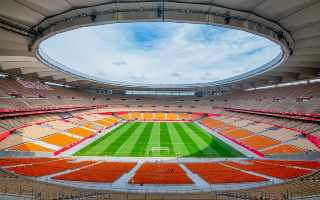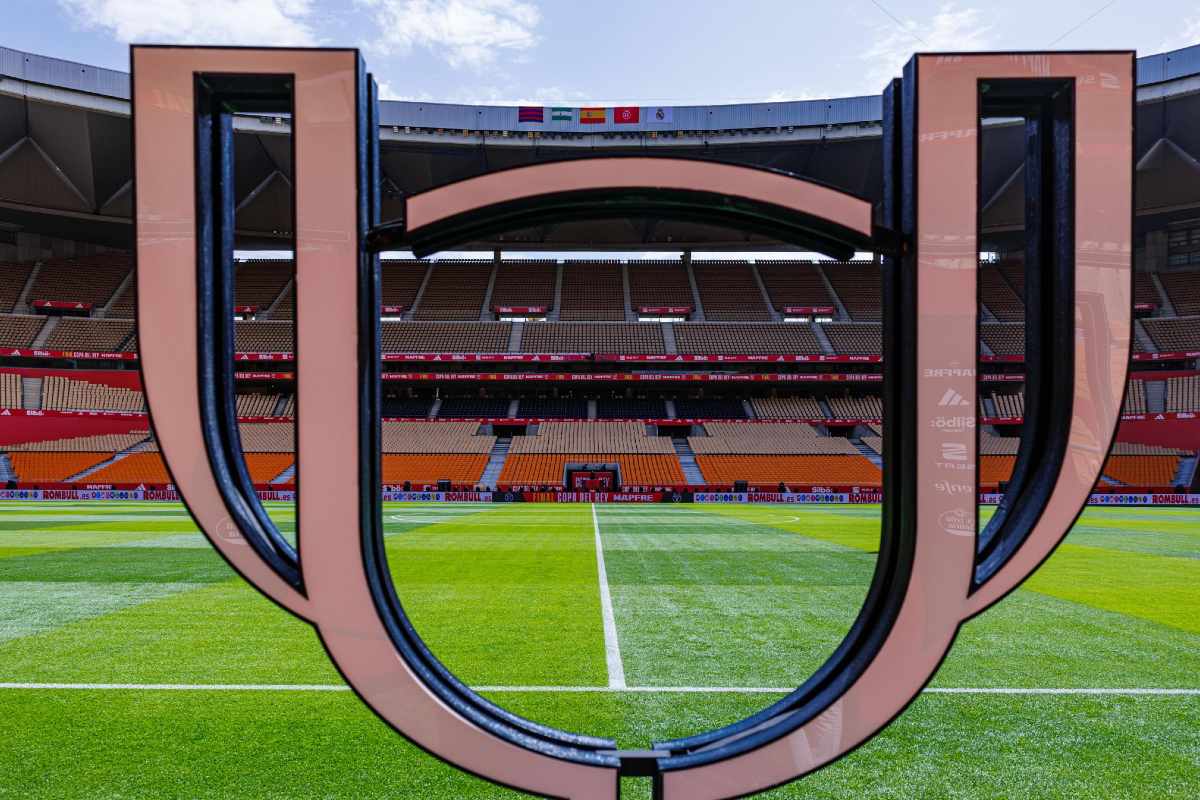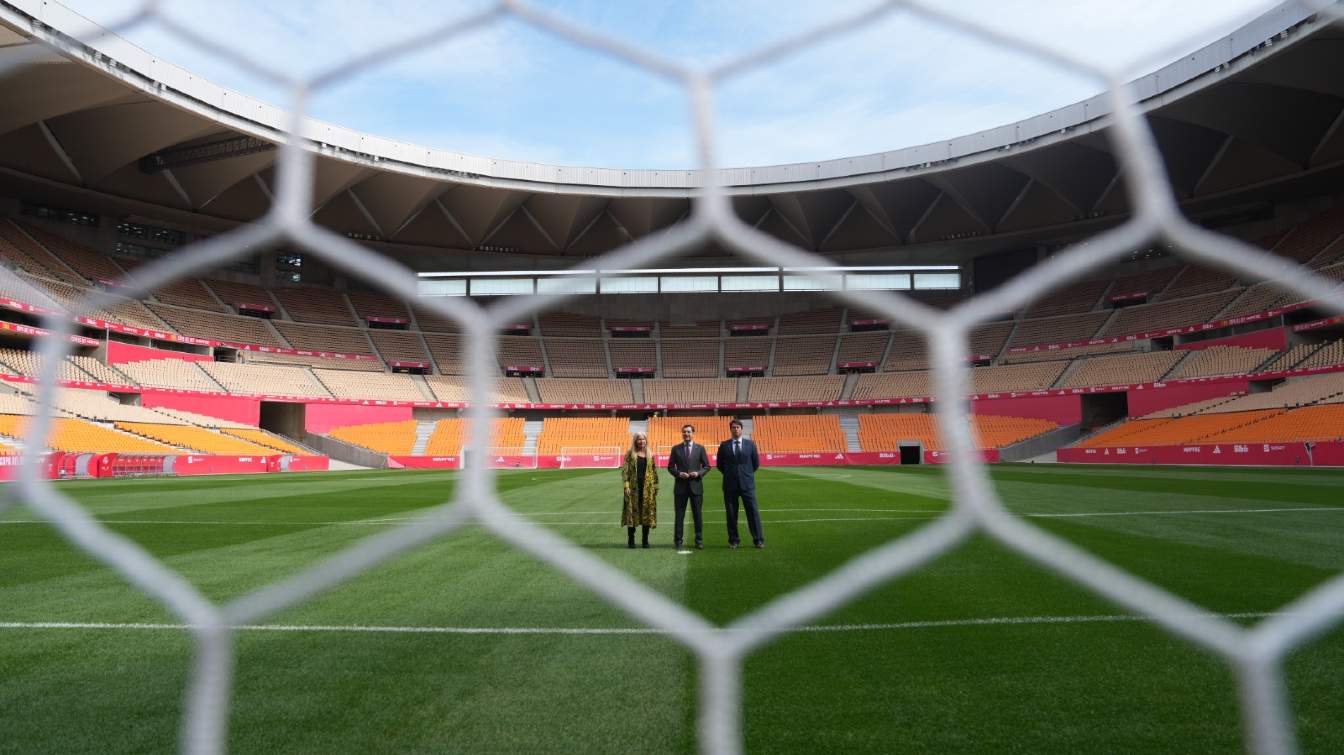Spain: La Cartuja ready for Copa del Rey final – what does future hold for stadium?
source: StadiumDB.com; author: Paulina Skóra
 FC Barcelona and Real Madrid will make their debut this Saturday at the renovated Estadio La Cartuja, which is set to become Spain’s third flagship venue, following Camp Nou and Santiago Bernabéu.
FC Barcelona and Real Madrid will make their debut this Saturday at the renovated Estadio La Cartuja, which is set to become Spain’s third flagship venue, following Camp Nou and Santiago Bernabéu.
Advertisement
Modern acoustics and new pitch
The stadium’s refurbishment was completed just days ago, in time for the Copa del Rey final scheduled for Saturday, April 26 at 10:00 PM.
As part of the upgrades, La Cartuja gained over 15,000 additional seats. The athletics track was completely removed and replaced by a new ring of stands, increasing capacity and bringing spectators closer to the pitch. All seating areas are now fully covered, and the new acoustic design creates an immersive fan experience. During the renovation, the entire pitch, goals, and technical areas were dismantled to allow for reconstruction. A new playing surface has been installed for the final.
Daniel Oviedo, CEO of Sociedad Estadio de La Cartuja, likened the upgrades to those made at Real Sociedad’s stadium – formerly Anoeta, now Reale Arena – where the running track was also removed to bring the stands closer to the field.
 © Estadio La Cartuja | Just a few days ago, there were doubts about whether Estadio La Cartuja would be ready on time.
© Estadio La Cartuja | Just a few days ago, there were doubts about whether Estadio La Cartuja would be ready on time.
Is Spain turning its back on athletics?
The removal of the track has drawn criticism from the Royal Spanish Athletics Federation (RFEA). The disappearance of such infrastructure severely limits Spain’s ability to host major international athletics events,
the federation warned. José María Arrabal, Secretary General for Sports in the Andalusian government, argued that the remodel was not a blow to athletics but a way to give meaning to public investments,
stressing that the stadium must host events with at least 58,000 spectators to be financially viable – something currently only football can guarantee.
This trend is not isolated. In recent years, many Spanish stadiums have eliminated athletics tracks to move fans closer to the pitch. La Cartuja, however, holds special significance: it hosted Spain’s only World Athletics Championships in 1999, a landmark event in the stadium’s history. Since then, Spain has not hosted another global athletics championship, except for the 2010 European Championships at Barcelona’s Montjuïc – still the only major Spanish stadium that retains a running track. Andalusian officials have suggested that a modular track could be installed atop a platform over the pitch for future athletics events, though this proposal is largely seen as symbolic rather than a practical commitment. The stadium’s limited athletic use over the past 25 years offers little optimism.
This erosion of infrastructure also impacts Spain’s Olympic ambitions. Madrid has made multiple bids to host the Olympics, but the lack of a suitable Olympic stadium now makes such efforts unrealistic. Reviving them would require building a new venue from scratch or fully transforming an existing one – both options involving massive costs and complex legal hurdles.
 © RFEF
© RFEF
Betis set to move in
La Cartuja will soon serve as a temporary home for Real Betis during the redevelopment of the Benito Villamarín, with work set to begin before next season. The move will allow 10,000–12,000 fans from the season ticket waiting list to attend matches, and significantly boost revenue through premium seating – with around 4,000 VIP seats planned, tripling current availability and matching the capacity of the future Betis stadium.
Daniel Oviedo confirmed La Cartuja is ready to welcome Betis, noting that the club is already working on relocating its offices and adapting locker rooms for the first team. We’ve been working with Betis for almost a year. Some work can continue during matches, while other upgrades – such as capacity increases – require a break. Betis will benefit and is pleased with the temporary move. It will be a test of how the club functions in a large venue,
Oviedo told Canal Sur Radio.
While the ticket reallocation is up to the club, Oviedo said the larger capacity will allow us to satisfy nearly everyone.
He added that two new roadways are planned to improve access to the stadium on matchdays. Isa Sánchez, Andalusia’s Secretary General for Sports, echoed this, stating: Real Betis couldn’t have chosen a better venue than La Cartuja. We’re ready to welcome them. Access is improving – we’ve already made some changes for the final and will continue developing the surrounding area.
She also suggested a bolder idea: I see a possibility where Betis and Sevilla FC could share La Cartuja. In other cities, rivals use the same stadium.
For now, Sevilla FC is expected to move only after Betis leaves – likely in the second half of 2027.
 © Estadio La Cartuja
© Estadio La Cartuja
What’s next for the Copa del Rey final?
This Saturday’s match marks the sixth consecutive Copa del Rey final held at La Cartuja. The current agreement runs until 2025, but talks are underway to extend it and establish Seville as the tournament’s permanent host. The deal was originally signed under former RFEF president Luis Rubiales, and is part of the Operación Brody investigation, which led to searches of several involved institutions by the Guardia Civil. Andalusian president Juanma Moreno has confirmed efforts to secure new agreements to keep both Copa del Rey finals and Spain national team matches in Seville. While the federation is pleased with the collaboration so far, it has not ruled out returning to a rotating final-hosting model depending on future bids.
The last final played outside La Cartuja was in 2019 – also in Seville, at the Benito Villamarín, where Valencia defeated Barcelona. Historically, Madrid has hosted the final most often (68 times), with Santiago Bernabéu (36), Vicente Calderón (14), and Mestalla in Valencia (10) topping the list of individual stadiums. Before the current agreement, the only fixed requirement was that the final venue must seat at least 45,000 spectators.
Advertisement
 StadiumDB
StadiumDB